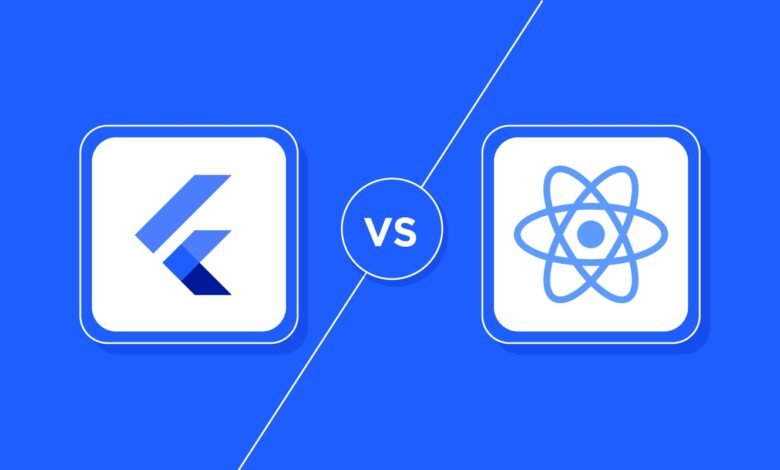Mobile Development Frameworks: Flutter vs. React Native
This post will primarily contrast Flutter and React Native regarding performance, development speed, and community support.

The mobile app industry has experienced tremendous growth over the last few years. With the rise of smartphones, there is an increasing demand for robust, efficient, and user-friendly applications. Mobile development frameworks play a pivotal role in this ecosystem. Among the most popular frameworks are Flutter and React Native. Each framework has its unique strengths and weaknesses, making them suitable for different project requirements. This article provides a detailed comparison to help business owners make informed decisions about mobile app development.
As a business owner, choosing the right mobile development framework can significantly impact the efficiency and success of your application. But how do you determine which framework is best suited for your needs? Understanding the differences between Flutter and React Native is essential.
This post will primarily contrast Flutter and React Native regarding performance, development speed, and community support. By diving deep into their features, we aim to provide clarity and direction for your mobile app development journey.
Flutter Overview
Developed by Google, Flutter is an open-source UI toolkit that facilitates building natively compiled applications for mobile, web, and desktop from a single code base. One of its most attractive features is its widget-based architecture, enabling developers to create highly customized and visually appealing user interfaces. Flutter uses the Dart programming language, which, while different from JavaScript, offers strong performance and modern features suitable for mobile app development.
Flutter’s design principle prioritizes fast development and expressive UI. It supports hot reload, allowing developers to see the repercussions of code changes in real time. This significantly reduces the development time and provides a smoother development experience. Businesses seeking a visually stunning app may find Flutter particularly appealing, given its extensive library of pre-designed widgets.
Flutter’s community support is growing rapidly, as more developers are adopting this framework. Additionally, Google’s backing enhances its credibility, although getting accustomed to Dart may pose initial challenges for some developers. Nevertheless, businesses looking for a reliable go-to framework will find Flutter a solid choice, especially for cross-platform projects.
React Native Overview
React Native, developed by Facebook, is another popular open-source framework for building mobile applications using JavaScript and React. This framework allows developers to write code once and deploy it across both iOS and Android platforms, leveraging native components for enhanced performance. React Native adopts a more straightforward approach, focusing on creating a seamless experience by bridging between native APIs and JavaScript.
One of React Native’s defining features is its ability to utilize existing native components. This means developers can handpick the best parts of each platform, resulting in a more optimized application. The framework employs a virtual DOM, contributing to quick and responsive UIs. Additionally, React Native allows developers to implement complex features seamlessly.
The community surrounding React Native is robust, with extensive libraries and third-party plugins available. This vast ecosystem can be a considerable advantage, providing developers with the resources they need to create high-quality applications efficiently. For businesses, leveraging the popularity of React Native can facilitate quicker onboarding and more cost-effective development processes.
Performance Comparison
Performance is a critical factor in mobile app development. Users expect applications to load quickly and run smoothly. Both Flutter and React Native have their own attributes when it comes to performance, resulting in applications that perform well, but in different ways. Flutter is often praised for having near-native performance because it compiles to native ARM code.
Flutter achieves high performance through the use of its rendering engine, Skia. Instead of relying on native components, Flutter handles UI itself, leading to high frame rates even on devices with lower specifications. This can be especially advantageous for graphically intense applications, such as games or applications that rely on animations.
On the other hand, React Native offers good performance, primarily due to its native components and interaction with native APIs. Although React Native relies on a bridge for communication between JavaScript and the native code, this can introduce some latency in performance, especially in applications that require intensive calculations or real-time updates.
Development Speed
Speed is vital in today’s fast-paced business environment. When comparing the development speed of Flutter and React Native, both frameworks offer features that can enhance productivity, but their approaches differ. React Native has a slight edge because of its reliance on JavaScript, a language many developers are already familiar with. It also has a wide array of pre-built components and third-party libraries that can quicken the development process.
Flutter, while it offers features like hot reload, has a steeper learning curve due to the Dart programming language. It may take more time for developers to get accustomed to Dart, especially if their background is predominantly in JavaScript. However, once developers become proficient, Flutter allows for rapid development of beautiful and complex UIs.
In summary, if development speed is your primary concern, React Native may be the better choice. Still, if you’re aiming to develop high-quality, customized UIs with rich designs, the initial learning curve of Flutter might pay off in the long run.
Community Support
Strong community support is essential for the success of any development framework. A robust community can provide resources, libraries, and troubleshooting assistance, which can ease the development process significantly. React Native boasts a large and active community, with extensive libraries and resources readily available for developers. This active ecosystem ensures that solutions to common issues can often be found quickly.
Flutter’s community, while smaller in comparison, is growing rapidly. Since its launch, Flutter has attracted a diverse group of developers, contributing to its rich library of packages and resources. Google’s backing further solidifies its standing. However, developers may find fewer options and resources compared to React Native, which could pose challenges during the development process.
In conclusion, if you prefer a more established framework with extensive resources, React Native is an excellent option. However, if you are willing to explore a newer framework that showcases promising growth, Flutter could provide the support needed for your project.
Which Framework to Choose?
Determining whether to choose Flutter or React Native largely depends on your business requirements and goals. If your top priority is to create a visually rich application that’s natively compiled for performance, Flutter is likely the more suitable choice. Its unique architecture allows for flexibility and customization that can set your application apart.
Conversely, if your focus is on faster development cycles with access to a more established framework, React Native may serve you better. For businesses that need to minimize time-to-market without compromising the application’s functionality, React Native’s resource availability could provide the leverage required for success.
It’s essential to evaluate your team’s skill set and the long-term vision for your application. If you anticipate needing advanced features in the future, Flutter’s customizability could prove invaluable. For simpler applications or those needing rapid iterations, React Native’s faster onboarding may be the way to go.
The Future of Mobile Development
The landscape of mobile development is constantly evolving. As technology advances, frameworks like Flutter and React Native are continually refining their tools and capabilities. Flutter is making strides in expanding its reach across platforms beyond mobile, including web and desktop applications. This versatility could cater to companies looking for comprehensive coverage from a single framework.
React Native, too, is maintaining its relevance by continually embracing new features and updates that enhance cross-platform capabilities. Additionally, it has strong support from the React community, which can lead to quicker adaptation to changes in the development ecosystem.
As a business owner, staying updated with these changes is crucial. Emerging trends, such as AI integration in mobile applications, are creating new opportunities. For instance, integrating artificial intelligence can enhance user experiences significantly. If interested, consider exploring AI mobile app development for insights on implementing such advanced technologies.
Getting Started with Mobile App Development
If you’re ready to embark on your mobile application development journey, the first step is to identify your primary goals and requirements. Are you developing an MVP (Minimum Viable Product) aiming for quick user feedback, or are you envisioning a feature-rich application? Understanding your priorities will guide your choice between Flutter and React Native.
Once you’ve decided on a framework, consider selecting a skilled mobile app development company. An experienced team can help implement best practices, ensuring that your application is well-architected and user-friendly. Their guidance can also navigate the complexities of obtaining user feedback and iterating on designs.
Final Thoughts: Making an Informed Decision
The choice between Flutter and React Native ultimately boils down to your project requirements, team capabilities, and long-term objectives. Each framework has its strengths that can impact the user experience and overall success of your application. Evaluate your business needs thoroughly and make an informed decision.
Keep in mind that mobile development is a significant investment for your business. Choosing the right framework is critical, and it can influence your application’s growth trajectory. Whether you opt for Flutter or React Native, ensure you have a clear roadmap and a capable team at your disposal. Doing so will set you on the path to a successful mobile application.
In conclusion, understanding the distinctions and nuances between Flutter and React Native will empower you to make a decision that aligns with your business goals. As technology continues to advance, your choice will position your application for success in the dynamic mobile app landscape.
FAQs
Q1: Can I use Flutter and React Native for web applications?A1: Yes, both Flutter and React Native have capabilities for web, but they are more optimized for mobile applications.
Q2: Which framework is better for high-performance apps?A2: Flutter typically offers better performance due to its compiled nature and custom rendering engine.
Q3: Is it easier to learn Flutter or React Native?A3: React Native is generally easier for developers familiar with JavaScript, while Flutter requires learning Dart, which may be a hurdle for some.
Meta Description
Explore a detailed comparison of Flutter and React Native mobile development frameworks for building efficient applications.
URL Slug
mobile-development-frameworks-flutter-vs-react-native
Social Media Posts
- Dive into the world of mobile development with our in-depth comparison of Flutter and React Native! Which framework fits your business best? Read our blog to find out! #MobileDevelopment #Flutter #ReactNative
- Are you torn between Flutter and React Native for your next mobile app? Join us as we explore the pros and cons of each framework! #AppDevelopment
- Boost your next app project by learning about Flutter and React Native! Our latest blog post compares the two leading mobile development frameworks. #Tech #BusinessGrowth











